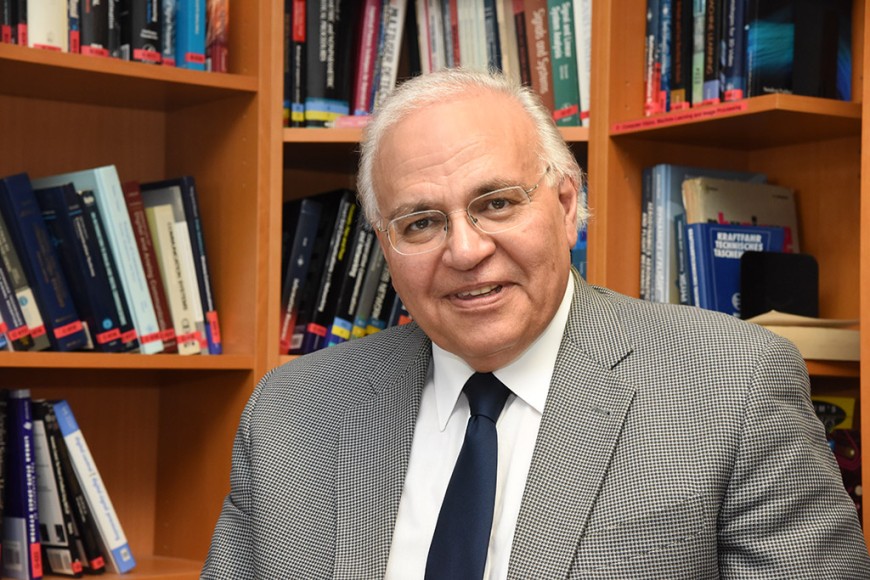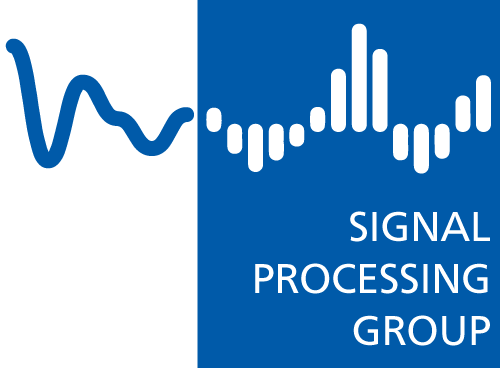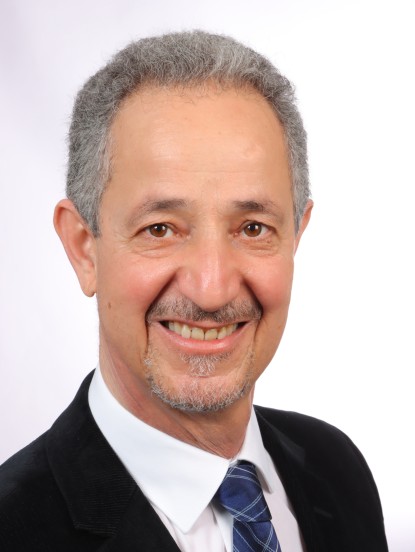Humboldt-Awardee Prof. Moeness Amin is on a Research Visit to the Signal Processing Group
An interview with the internationally renowned Professor of Engineering from Villanova University, Pennsylvania, USA
2016/06/24
The internationally renowned Professor of Engineering, Moeness Amin from Villanova University, Pennsylvania, is currently visiting TU Darmstadt to continue collaborative research. The 61-year-old Humboldt awardee is known, worldwide, as one of the leading researchers in the field of signal processing. Whilst in Darmstadt, Professor Amin, and his collaborators at TU Darmstadt, are continuing research on utilizing radar for fall motion detection. Such detection can assist in the health monitoring of elderly or gait impaired persons.

Abdelhak Zoubir, Professor of Electrical Engineering at TU Darmstadt, well remembers his first meeting with Moeness Amin which was in the late 1980s when they met at a conference in Grenoble, France. ‘At this time he was already a well-known researcher and I was only a PhD student’, Zoubir says. ‘Still, I would put a question to him’, he laughs. Back then the question was about knock detection in spark ignition engines. However I have a lot of others things to do here, like teaching and other. Since then their research focus has shifted.
He is always coming back
Today, Abdelhak Zoubir is a Professor and a researcher in the field of signal processing. In his office at the Hans Busch Institute, Moeness Amin, who is of Egyptian origin, sits opposite to him. Ever since their first meeting, a close scientific cooperation between their respective research groups has developed with Professor Amin’s group being at Villanova University which is a Catholic university near Philadelphia. Over the past 15 years Professor Amin has been coming to Darmstadt. With the recent Humboldt research award in recognition of his research, he decided to visit TU Darmstadt again. ‘Our scientific interests are very similar’, he says.
Professor Amin’s professional career started with a scholarship to University of Colorado, Boulder, where the young engineer was undertaking research in the field of signal processing. Professor Amin was born into an affluent Egyptian family and was always interested in applied mathematics. He was one of the top students in his class for his Bachelor’s degree which he completed in Cairo. He then moved to the University of Petroleum and Minerals in Saudi Arabia where he completed his Master’s degree. At first, his major at Cairo University was petroleum engineering. His father, a lawyer, was working as a consultant in Saudi Arabia’s oil industry, and Professor Amin remembers him saying: ‘Study petroleum engineering, because one can make a lot of money in this field’. ‘But that wasn’t what I wanted and I switched to electrical engineering. I didn’t care, how much money I was going to make’, Amin laughs.
His success has vindicated his career choice. As a top student of his class, he travelled to study in the USA and specialized, at first, in signal processing, later in communication and finally in radar imaging. He has received numerous awards for his research, including the IEEE Signal Processing Society Technical Achievement Award and the NATO Scientific Achievement Award. Moeness Amin has also conducted research for the US Department of Defense. His focus now is on transferring the knowledge gained from research related to defense and security to civilian applications, in particular, the needs of an aging society.
Radar in health care
‘Today, radar is safe, reliable and, even for health care, affordable’, he says. With radar devices, which can be as small as the palm of your hand, installed in an apartment, the movement of elderly or gait impaired persons can be recognized and classified. ‘Each movement has its characteristic signature and specific frequencies’, the 61-year-old explains. From the radar signal, it is possible to recognize whether a person is sitting, walking or falling.
Yet, there are open problems that Professor Amin and his colleagues from Darmstadt are working on together: from the radar signal, fast sitting and slow falling of a person can be mistaken for one another as these motions cause similar frequency signatures which lead to unwanted false alarms. However, Moeness Amin is sure that it will soon be a mature technology. In contrast to cameras, where people are aware of being monitored and watched, radar is unobtrusive. He and his colleagues are also working on intelligent radar technology, which automatically adapts to an individual person, his/her daily motions and activities. The technology has the potential to recognize whether a person is walking with a cane or a walker, whether his/her cat is jumping off the table, or whether he/she is slowly sliding from the chair to the ground.
Amin and his students watched hundreds of videos, mimicked falls by themselves and modeled them on a computer – just to consider all possible parameters and possibilities. ‘The radar only detects, what it was trained to detect’, the American Professor says. Presently, Amin is even thinking of a radar based monitoring system which can identify illnesses or monitor recovery processes. The Humboldt research award allows him to undertake research in Germany for up to 6 months throughout the next 3 years and this will include visits to Darmstadt.
Interview by Astrid Ludwig. Translated from the German article.


